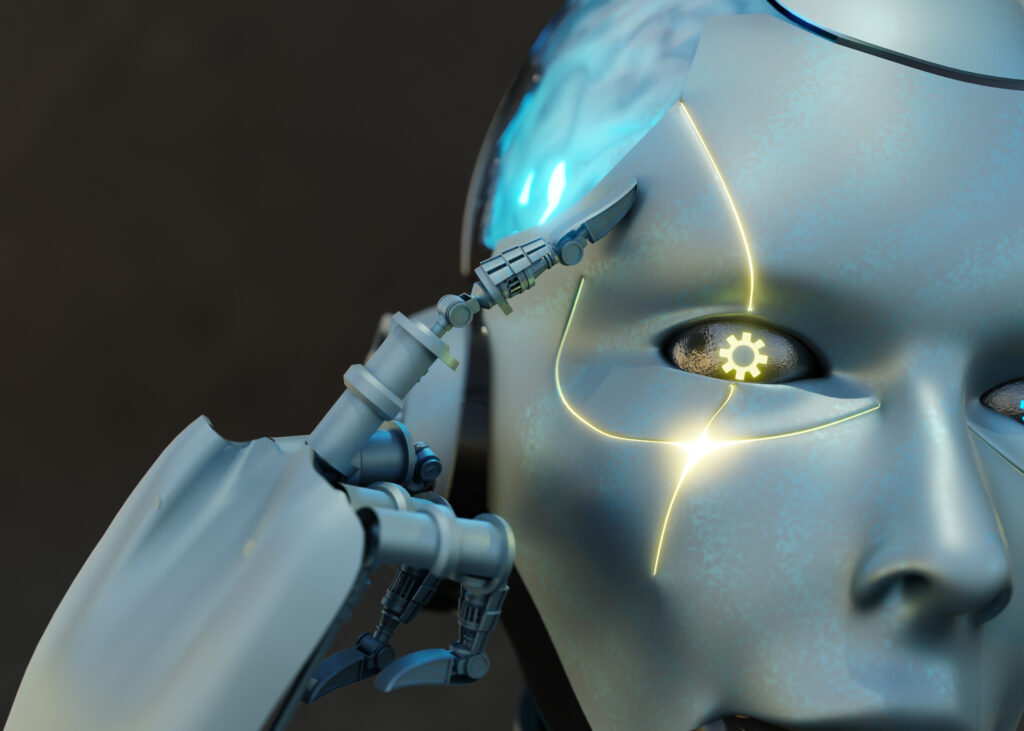“Revolutionizing Robotics: ML Meets Neuro-Robotics”
Neuro-robotics is a field of study that focuses on the integration of neuro-scientific principles-development of robots. Neuroscience and robotics to create intelligent machines that can perform complex tasks with human-like dexterity. The goal of neuro-robotics is to create robots that can interact with their environment, learn from it, and adapt to new situations. Machine learning […]

Neuro-robotics is a field of study that focuses on the integration of neuro-scientific principles-development of robots.
Neuroscience and robotics to create intelligent machines that can perform complex tasks with human-like dexterity.
The goal of neuro-robotics is to create robots that can interact with their environment, learn from it, and adapt to new situations. Machine learning has become an important tool in the advancement of neuro-robotics as it provides the means for robots to learn from data and improve their performance over time.
Machine learning is a type of artificial intelligence that involves the development of algorithms that can learn from data and make predictions. These algorithms are designed to recognize patterns in data and use this information to make decisions.
In neuro-robotics, machine learning algorithms are used to train robots to perform specific tasks. For example, a robot can be trained to recognize objects, perform movements, and navigate in its environment using machine learning algorithms.

One of the key benefits of integrating machine learning into neuro-robotics is that robots can learn and improve their performance without explicit programming. Instead of being programmed to perform a specific task, robots can learn from experience and continuously improve their performance.
This is particularly useful in situations where the environment or task is changing or unknown. With machine learning, robots can adapt to new situations and continue to perform tasks effectively.
Another benefit of integrating machine learning into neuro-robotics is that robots can learn from a large amount of data, which can improve their performance significantly.
This is because machine learning algorithms can process and analyze data much faster than humans can. As a result, robots can learn more about their environment and make more informed decisions about how to interact with it.
One of the challenges of integrating machine learning into neuro-robotics is that the algorithms must be designed in a way that takes into account the unique characteristics of the robot and its environment.
Example, robots may have limited sensory information, which can affect the accuracy of machine learning algorithms. Additionally, robots may operate in dynamic environments where the task or situation may change quickly, which can impact the performance of the algorithms.
To overcome these challenges, researchers must design machine learning algorithms that are robust and capable of operating in complex and dynamic environments.
Another challenge of integrating machine learning into neuro-robotics is ensuring that robots make ethical and safe decisions. For example, robots must be designed to avoid causing harm to humans or the environment.
To ensure that robots make ethical decisions, researchers must develop algorithms that incorporate ethical principles and safety constraints. Additionally, researchers must consider the impact that robots may have on society and work to develop policies that regulate their use.
The integration of machine learning into neuro-robotics has the capability to greatly transform the realm of robotics. By utilizing machine learning, robots can gain knowledge through experience, adjust to varying circumstances, and enhance their performance continually.
However, the development of machine learning algorithms for neuro-robotics must be approached with care to ensure that robots make ethical and safe decisions. As the field of neuro-robotics continues to advance, it will be exciting to see how machine learning will shape the development of intelligent robots.


